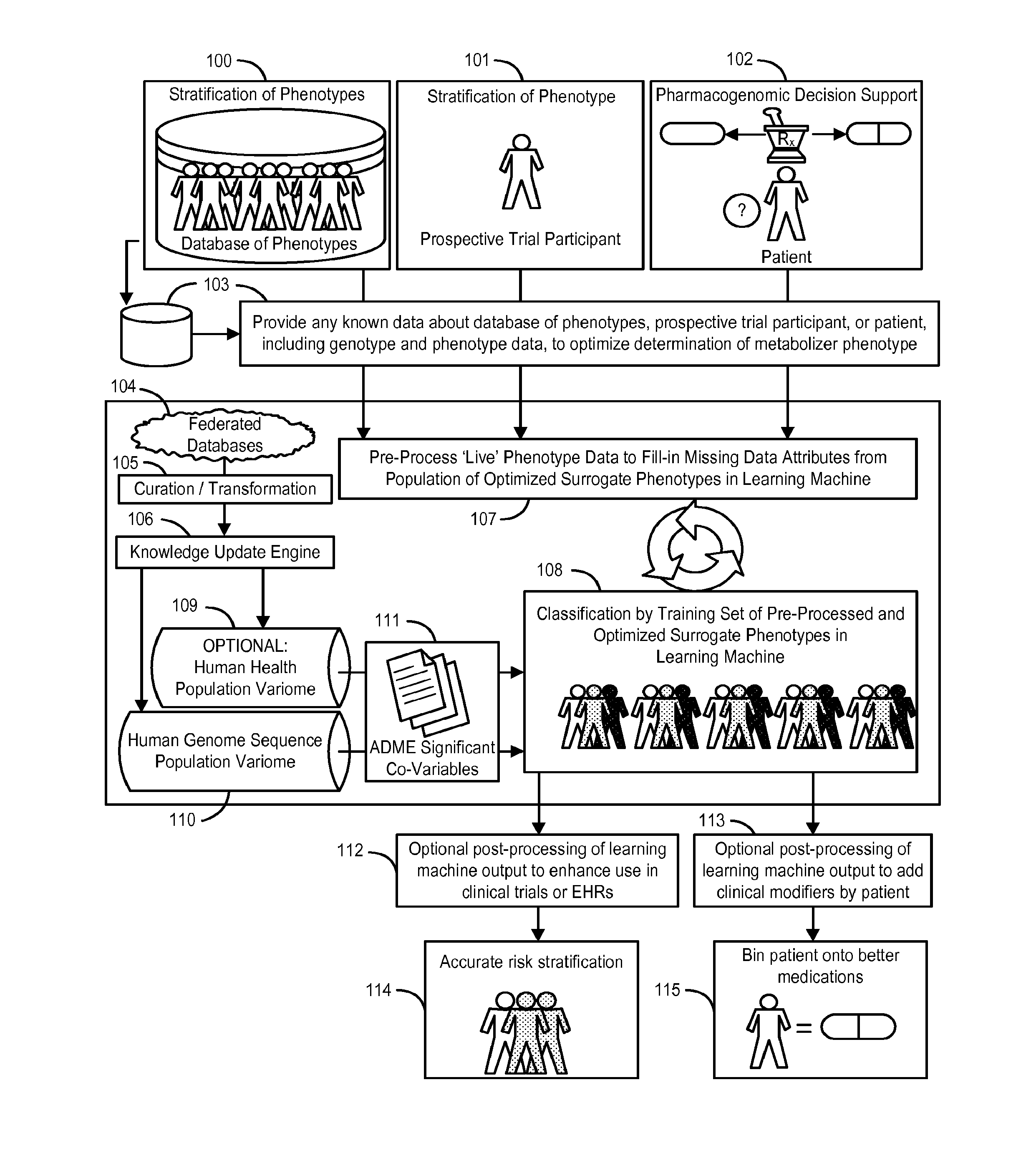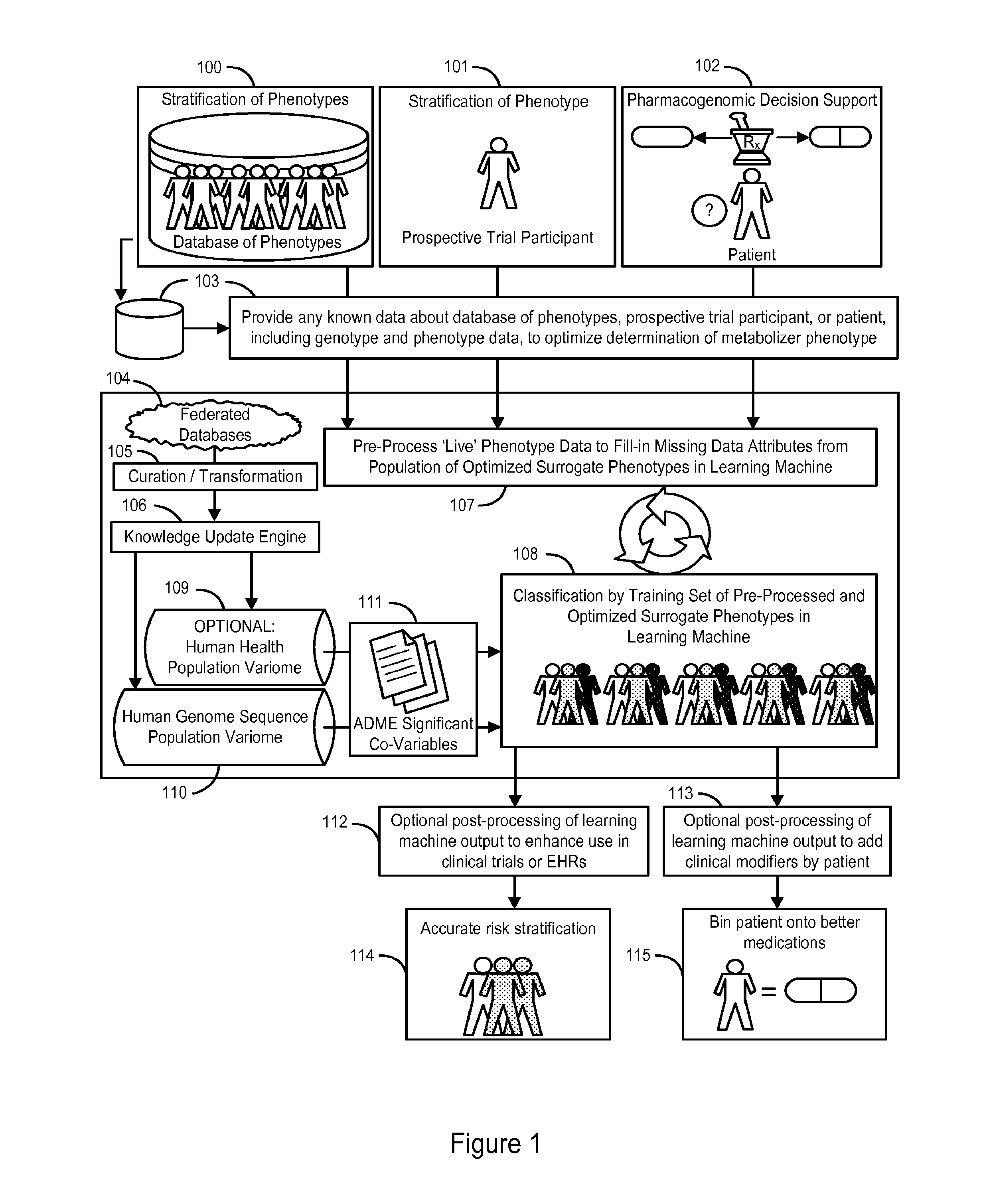System and Methods for Pharmacogenomic Classification
a pharmacogenomic and system technology, applied in the field of system and method for pharmacogenomic classification, can solve the problems of difficult to determine without direct experimental evidence, difficult to identify predictive associations, and difficult to understand the impact of genetic polymorphisms in adme genes, etc., and achieve excellent statistical power.
- Summary
- Abstract
- Description
- Claims
- Application Information
AI Technical Summary
Benefits of technology
Problems solved by technology
Method used
Image
Examples
examples
[0109]The following section describes our analysis of a dataset of ADME variation extracted from 17,131 whole genome sequences of United States residents that demonstrates the presence of pharmacogenomically-discrete subpopulations in that dataset. We further demonstrate that these subpopulations can be instantiated as “surrogate phenotypes” that can be utilized as a training set to train a learning machine for the classification of an individual or group of individuals into one of a discrete set of pharmacogenomic phenotypes.
Pharmacogenomic Population Structure of a Large Dataset of Whole Human Genomes
[0110]Our previous work analyzing a very large dataset of whole human genome sequences of healthy U.S. residents revealed tremendous inter-ethnic and inter-geographical differences in genomic variation and in the effects of those genetic variations, for example on CYP450 isoform activity (see U.S. Provisional Application No. 61 / 652,784, filed May 29, 2012, incorporated herein by refer...
PUM
 Login to View More
Login to View More Abstract
Description
Claims
Application Information
 Login to View More
Login to View More - R&D
- Intellectual Property
- Life Sciences
- Materials
- Tech Scout
- Unparalleled Data Quality
- Higher Quality Content
- 60% Fewer Hallucinations
Browse by: Latest US Patents, China's latest patents, Technical Efficacy Thesaurus, Application Domain, Technology Topic, Popular Technical Reports.
© 2025 PatSnap. All rights reserved.Legal|Privacy policy|Modern Slavery Act Transparency Statement|Sitemap|About US| Contact US: help@patsnap.com



